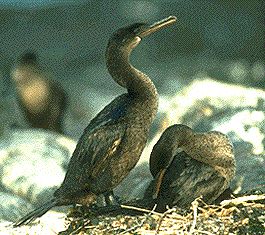Adaptive explanation - Can an organ change its function without changing structure?

Preadaptation
The term preadaptation is applied when a large change in function is accomplished with little change in structure.
As we look at the historical changes in the evolution of an adaptation, it is possible that at every stage the organ served the same function (the evolution of the eye is probably an example - all its stages probably had visual functions), or the earlier stages could possibly have had different functions from the later ones. The classical Darwinian term for the second possibility is preadaptation. The earlier stage is described as a preadaptation for the later stage.
Preadaptation does not imply any futuristic or anticipatory faculty in evolution. All that is happening is that sometimes, by chance, an organ that works well in one function turns out to work well in another function after relatively little adjustment. A possible example of preadaptation is bird feathers: although obviously valuable for flight, it has been suggested that they were originally an adaptation for insulation: the cormorants opposite are certainly benefiting from this aspect of feather design.
The evolution of tetrapod limbs is an example. An animation shows how a structure which was effective at locomotion in water became good at locomotion over land with relatively few changes.
| Next |



